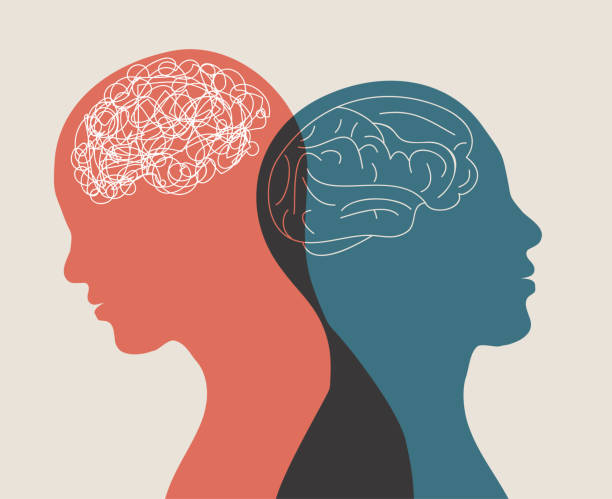Why Ganesha Speaks to the Psyche
Every August-September, Lord Ganesha makes his grand entrance—idol processions, sweet modaks, and joyous chants filling the streets. But beneath the festive glitter lies a deeper psychological truth: Ganesha is not only worshipped as the remover of obstacles (Vighnaharta) but also as a symbolic archetype of the human psyche itself.
From his elephant head to his broken tusk, each feature tells a psychological story. Drawing on Jungian psychoanalysis, positive psychology, narrative identity theory, and Indian Psychology; his’s mythology can be read as a guidebook for resilience, creativity, and wholeness.
Read More: Joy of Diwali
1. Ganesha as the Archetype of Integration
Carl Jung proposed that myths and deities embody archetypes—primordial images that live in our collective unconscious (Jung, 1964). With his hybrid form, represents the integration of opposites:
- Elephant Head = intelligence, wisdom, memory.
- Human Body = playfulness, vulnerability, imperfection.
- Mouse Vehicle = desire and impulsivity, made manageable by awareness.
From a Jungian perspective, Ganesha represents the Self archetype—the totality that unites conscious and unconscious parts of the psyche. Worshipping Ganesha externalizes our quest for wholeness: the balance of power and gentleness, discipline and indulgence.
2. The Broken Tusk
The story goes: when sage Vyasa dictated the Mahabharata, Ganesha’s pen broke. Undeterred, he snapped off his tusk and continued writing. What might appear as a “loss” becomes a metaphor for creative adaptation.

Narrative psychology emphasizes how people construct meaning through the stories they tell about their lives (McAdams, 2001). Ganesha’s tusk becomes a redemptive story: imperfection transformed into contribution. Positive psychology echoes this: setbacks can serve as springboards for growth and purpose (Seligman & Csikszentmihalyi, 2000).
Instead of shame over imperfection, his’s broken tusk symbolizes resilience, self-acceptance, and meaning-making.
3. Vighnaharta
Interestingly, Ganesha doesn’t just remove obstacles—he sometimes creates them. In one myth, he blocked Lord Shiva himself until Shiva acknowledged his presence.
In psychoanalytic terms, obstacles function like resistances in therapy: they frustrate us so that deeper truths emerge (Freud, 1917/1957). In positive psychology, obstacles cultivate grit and perseverance (Duckworth, 2016).
He symbolizes the paradox that obstacles are both hindrances and teachers. He embodies the psyche’s function of testing, slowing us down, and redirecting us toward greater awareness.
4. The Belly and the Sweet Modaks
Ganesha’s big belly, said to contain the entire cosmos, is more than comic relief—it represents psychological containment.

The belly symbolizes the capacity to hold emotions, drives, and contradictions without breaking. His sweet modaks remind us of savoring—the ability to mindfully enjoy life’s pleasures (Bryant & Veroff, 2007).
By embodying both indulgence and control, he models emotional flexibility: to savor joy without being consumed by it.
5. Ganesha as Guardian of Beginnings
Why is he invoked first in every Hindu ritual? Because he marks beginnings. In psychological terms, he acts as a narrative anchor.
Narrative identity theory suggests that how we begin a life story—whether with fear or hope—shapes its trajectory (McAdams & McLean, 2013). Worshipping Ganesha before starting a project sets an intentional tone of resilience and success.
Thus, Ganesha’s archetype helps individuals frame their lives as purposeful stories rather than random chaos.
6. The Playful Trickster
Ganesha is also a trickster—stealing sweets, outsmarting gods, and demanding attention. Trickster figures in mythology often represent the shadow side of the psyche—mischief, play, and chaos that prevent life from becoming too rigid (Campbell, 1949).

Psychologically, this aligns with the role of humor in coping: humor regulates stress, enhances creativity, and protects against depression (Martin, 2007). Ganesha’s playfulness reminds us not to take ourselves too seriously—a psychological antidote to perfectionism.
Ganesh Chaturthi as Psychological Renewal
Ganesh Chaturthi is more than a festival—it’s a yearly psychological workshop in disguise. Through symbols, stories, and rituals, he embodies the timeless truths of the psyche:
- Integration
- Resilience
- Growth through obstacles
- Containment and savoring
- Narrative anchoring
- Humor and play
By engaging with Ganesha, devotees don’t just honor a deity—they participate in a collective psychological process that fosters resilience, meaning, and joy.
So when you chant Ganapati Bappa Morya! this year, remember: you are not only calling upon divine power, but also activating the archetypal wisdom of your own psyche.
References
Bryant, F. B., & Veroff, J. (2007). Savoring: A new model of positive experience. Mahwah, NJ: Lawrence Erlbaum Associates.
Campbell, J. (1949). The hero with a thousand faces. Princeton University Press.
Duckworth, A. (2016). Grit: The power of passion and perseverance. Scribner.
Freud, S. (1957). A general introduction to psycho-analysis (J. Riviere, Trans.). Liveright. (Original work published 1917).
Jung, C. G. (1964). Man and his symbols. Anchor Press.
Martin, R. A. (2007). The psychology of humor: An integrative approach. Academic Press.
McAdams, D. P. (2001). The psychology of life stories. Review of General Psychology, 5(2), 100–122. https://doi.org/10.1037/1089-2680.5.2.100
McAdams, D. P., & McLean, K. C. (2013). Narrative identity. Current Directions in Psychological Science, 22(3), 233–238. https://doi.org/10.1177/0963721413475622
Seligman, M. E. P., & Csikszentmihalyi, M. (2000). Positive psychology: An introduction. American Psychologist, 55(1), 5–14. https://doi.org/10.1037/0003-066X.55.1.5
Subscribe to PsychUniverse
Get the latest updates and insights.
Join 3,027 other subscribers!
Niwlikar, B. A. (2025, August 27). Ganesha As Archetype and 6 Important Psychological Lessons They Teach. PsychUniverse. https://psychuniverse.com/ganesha-as-archetype/



